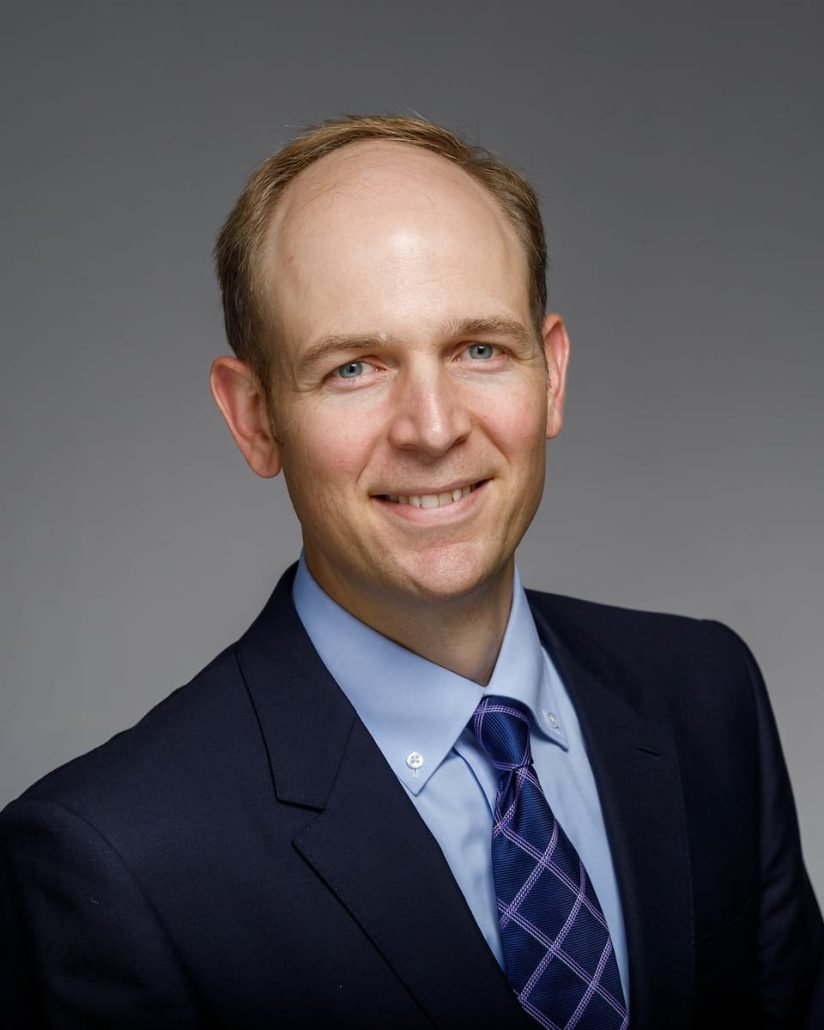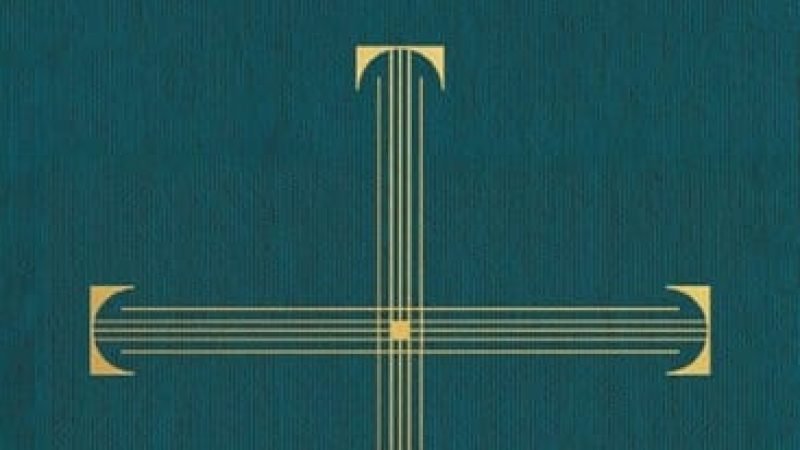The 1662 Book of Common Prayer, International Edition is set for release in January 2021, published by IVP. This lightly-updated text of the classic prayer book has been edited by Samuel L. Bray and Drew N. Keane. The editors were gracious to engage with me in a written interview, discussing the forthcoming volume.
Can you briefly share about your background and connection with Anglicanism?
DNK: My connection with Anglicanism began when a friend in high school invited me to visit her church, The Episcopal Church of the Ascension in Cartersville, GA. The Book of Common Prayer (1979) caught hold of me with its language and the very idea of set prayers, which I had never experienced before. In undergrad, while studying literature and Bible, I began to use the BCP 1979 for Morning and Evening Prayer with a small group of guys in my dorm. There I discovered the BCP 1928. I found that what I loved most about the 1979 were not those things unique to it, but those things it carried forward. As a graduate student at Georgia Southern, I began attending a 1928 Prayer Book parish, St. John’s Church in Savannah, where I formally became Episcopalian. There, with the invaluable support of the Rev. Gavin Dunbar, my interest in the Prayer Book only deepened. Once again, I discovered that what was best about the 1928 were not those things unique to it, but what it carried forward from the classic Book of Common Prayer, the 1662. In 2012, by a surprising turn of providence, I was appointed to the Standing Commission on Liturgy and Music, on which I served until 2018. Working with brilliant scholars and musicians, I learned a great deal about the study and crafting of liturgy, and that, in turn, influenced my scholarship. Through all of that, I became convinced of the continuing vitality of the 1662 Prayer Book.
SLB: My first exposure to the Prayer Book came during graduate school, when a housemate gave me a copy of the Book of Common Prayer (1979) and a book of sermons by Charles Simeon. Within a couple years I had started reading and using the classic prayer books, and one especially formative volume for me was John Booty’s Folger edition of the BCP 1559. In the subsequent decade and a half, my family and I have lived in six cities (the academic life can be an itinerant one), and in several I have been a member of an Anglican church of one stripe or another, as well as a churchwarden, most recently in the Anglican Diocese of the Living Word. The BCP 1662 has been at the heart of my devotional life for about a decade and a half.
Why do you think the 1662 Book of Common Prayer continues to endure as a tool for worship?
DNK: One significant reason for the 1662’s endurance is that it was designed to be heard. Public oratory was prevalent in early modern culture. The bulk of the 1662 derives from the work of Thomas Cranmer and Miles Coverdale more than a century earlier. Cranmer translated or wrote most of the liturgical “script,” while Coverdale translated the Psalter and many of the other biblical texts incorporated into the liturgy (for example, “the comfortable words”).
Well attuned to the art of rhetoric, they crafted English to attract attention and aid both comprehension and memorability. Rhythm and reiteration are carefully employed, aural features particularly familiar to students of music. If you’ve ever found you know the lyrics to a song despite never having tried to memorize them, you know the effectiveness of these devices. That is not to say that the Prayer Book is lyrical — no, it is prose — but it is crafted with the same level of attention to rhythmic and repeating patterns.
These aural effects are not decorative though; they serve the same purpose as preaching — namely, to set forth the transformative power of the gospel (Romans 12:2). J. I. Packer, Gavin Dunbar, and others have highlighted the Prayer Book’s continual reiteration of the guilt, grace, and gratitude triad, which the Reformers saw as the structure of Paul’s Epistle to the Romans. That reiteration is key, because the goal is not simply bare knowledge but transformative knowledge. By guiding us through this gospel triad again and again, cyclically, the Prayer Book fosters the renewing of our minds. As much as in the sixteenth century, liturgy today still aims to shape our beliefs and behaviors outside of the liturgy, to influence our lives beyond the walls of the church building, which means these memory-enhancing features not only make the language attractive but useful.
SLB: Drew has given what might be called a functional-theological reason the BCP 1662 endures, and others could be given, too. One is the saturation with Scripture (far more is read than in later lectionaries). Another reason is that the 1662 has a simplicity that is in sharp contrast with later prayer books, especially the ones that are downstream from the Liturgical Renewal Movement. Those books have many options and much greater complexity. In the case of Common Worship, it is fair to invoke the words from Archbishop Cranmer’s “Concerning the Service of the Church”: it was “so hard and intricate a matter that many times there was more business to find out what should be read, than to read it when it was found out.” But beyond these reasons, the 1662 endures simply because it is a normative authority in the Anglican Communion in a way that no other prayer book is. It is no surprise that in this time of increasing fragmentation, there is more and more attention to the Formularies as offering a central ground for Anglican identity.
It is no surprise that in this time of increasing fragmentation, there is more and more attention to the Formularies as offering a central ground for Anglican identity.
Samuel L. Bray
What about this edition of the prayer book will be most helpful to those who use it?
DNK: Sam mentioned a key usability advantage of the 1662 (over 20th and 21st Century prayer books): the minimal number of options, meaning fewer choices that have to be made while praying. For those new to set forms of liturgy, the great number of options in say the BCP 1979 or the ACNA’s BCP 2019 can cause a kind of choice paralysis (like Barry Schwartz explores in his 2004 The Paradox of Choice). For example, in Morning Prayer, after the first lesson, the 1979 provides 20 options for the canticle (seven in Rite I; 13 in Rite II), so, when a new user comes to this decision point in the office, she’s jarred out of the rhythm of praying and into an analytical mode, “Why might I choose one over the other? What are the advantages? Is one of these better suited to the lesson or the season than others?” Perhaps one has decided to cycle through them all, but this too presents some small hurdles — “Which canticle did I sing yesterday?” and the amount of page-flipping necessary to find the right one. These hesitations may seem relatively minor, but when you multiply them out by the number of decision points in the whole liturgy the effect can feel like advancing in fits and starts, like a driver unfamiliar with manual transmission. In the context of public worship, a larger number of options can result in really quite different liturgy from one parish to the next in which the rector’s preferences tend to dominate.
The 1662 presents far fewer decision points, which means a lower learning curve for new users and more certainty about what will be read in a service. You can be confident that the Prayer of Humble Access will not be omitted and that all of the Comfortable Words will be read at every Communion service. While one might assume that fewer options means less freedom, the inverse is often true. C. S. Lewis once explained this counterintuitive freedom-in-fixity by analogy to dancing. Only once you’re sure of the steps are you free to dance.
We’ve tried to enhance this feature of the 1662 in our edition in a number of ways by learning from usability features of later prayer books. For example, like the Canadian BCP 1962, we give the full text of the Gloria Patri at the end of canticles, to reduce the likelihood that a new user might not notice or remember the rubric that prescribes its use. We follow the Irish BCP 1926 in providing the full text of the Advent I and Ash Wednesday collects immediately after the subsequent collects in those seasons, again, reducing the likelihood that the rubric prescribing that might be overlooked or forgotten, while also reducing the amount of page-flipping necessary.
SLB: Another usability aid in this edition is the glossary, which has a number of terms that are retained but may be obscure or have a different meaning now. For example, for the letter R we have the following entries in the glossary: ramp, rebuke, reducing, refrain, rehearse, reins, reproof, responds, rid, room, rubric, and runagate. The glossary will help the user unfamiliar with the 1662, and it will also be a resource for someone who is teaching others how to use the Prayer Book.
Are there some other features of the prayer book worth noting?
SLB: One feature is the use of state prayers that work across different kinds of polities. For example, in the suffrages in Morning and Evening Prayer, instead of “save the Queen,” we have the phrase “save them that rule.”
Another distinctive feature is the appendices. One of these was already noted, the glossary. Another appendix presents the homily of justification, which is cross-referenced in Article XI. That Article is illuminated by the homily, and including it will introduce some readers for the first time to the riches of the Homilies. [Editor’s note: The homily noted here is from the first Book of Homilies.]
DNK: We’re also particularly excited about the Psalter in this edition. Miles Coverdale’s English translation of the Psalms is one of the gems of the English Reformation. While the Great Bible of which it was part was subsequently replaced with new authorized translations (the Bishops’ Bible and the King James), people continued to have the Coverdale Psalter bound up with their copies of the Prayer Book. In 1662, while the gospels and epistles in the Prayer Book were updated to the latest Authorized Version (the King James Version), the revisers decided to formally make the Coverdale Psalter part of the Prayer Book.
The Psalter presented some editorial challenges for us because it is the oldest part of the text (completed in 1539, a decade before the first edition of the BCP). It has the highest concentration of obscure language and in a handful of places the translation could not be justified with reference to any of the ancient sources (Hebrew, Greek, or Latin). An example is Psalm 42:8, where “concerning the land” becomes “from the land.”
But because the singing of this version of the Psalms is such a significant element of Anglican tradition, we felt the need for great care in handling these revisions. Where revision seemed necessary, we aimed to preserve the aural qualities of Coverdale (particularly, wherever possible, syllable count, distribution of accents, and assonance) and confined our revisions to words Coverdale could possibly have used so as to preserve his idiom. We thoroughly compared our work against other early modern English translations — for example, Geneva, Douay-Rheims, King James — as well as the more recent revisions of the Coverdale Psalter — for example, the 1928 US, 1962 Canadian, and the English Revised Psalter of 1963. We hope that result will prove to be the most useful edition of Coverdale’s Psalter available.
Is there anything else you’d like to add?
DNK & SLB: We are grateful for the chance to tell readers about this new edition of the classic prayer book. Our hope is that it will be nourishing and sustaining for all who use it.

Samuel L. Bray
Samuel L. Bray is a professor of law at the University of Notre Dame, as well as a McDonald Distinguished Fellow at the Center for the Study of Law and Religion at Emory University. He is a coauthor, with John F. Hobbins, of Genesis 1-11: A New Old Translation for Readers, Scholars, and Translators.

Drew N. Keane
Drew N. Keane is a lecturer in the Department of Writing and Linguistics at Georgia Southern University. From 2012 to 2018, he served on the Standing Commission on Liturgy and Music for the Episcopal Church. Among the volumes he contributed to was Lesser Feasts and Fasts.


